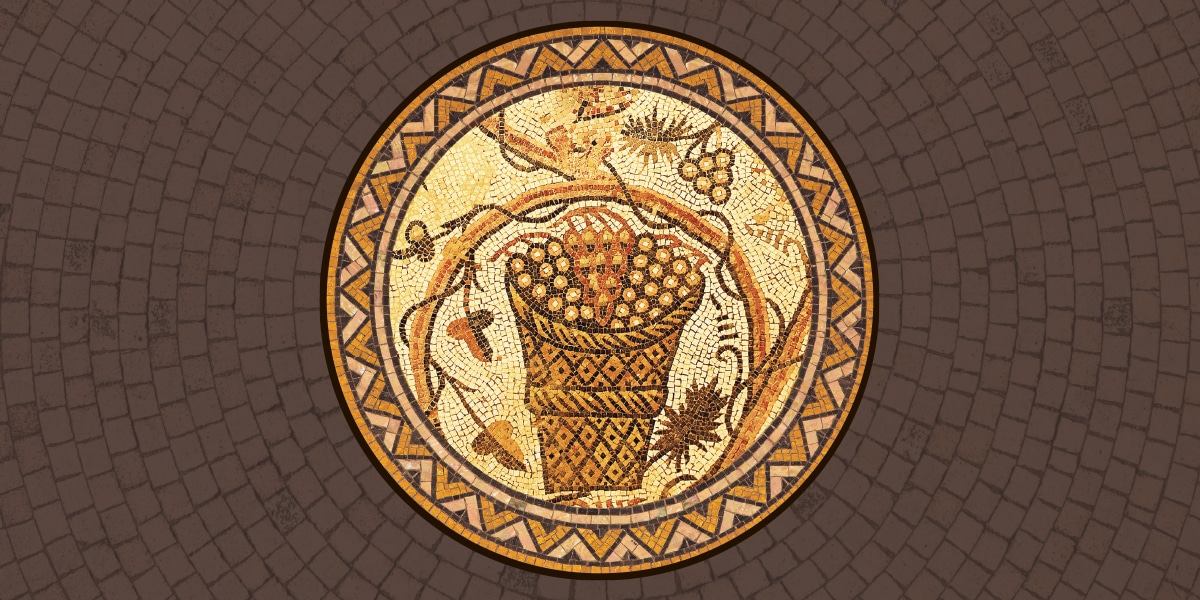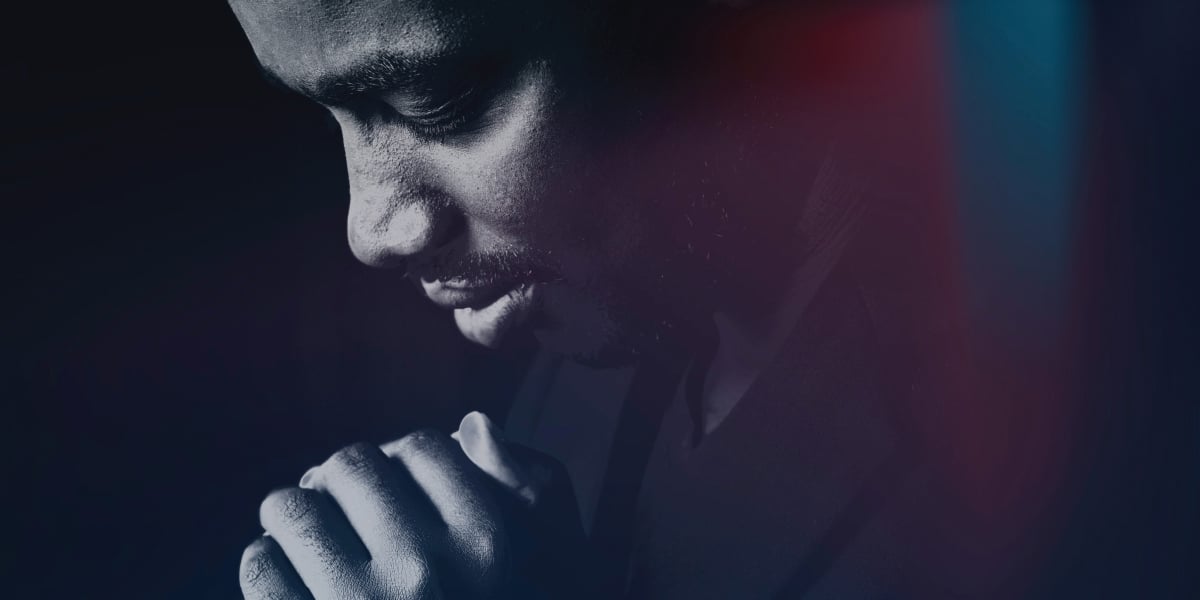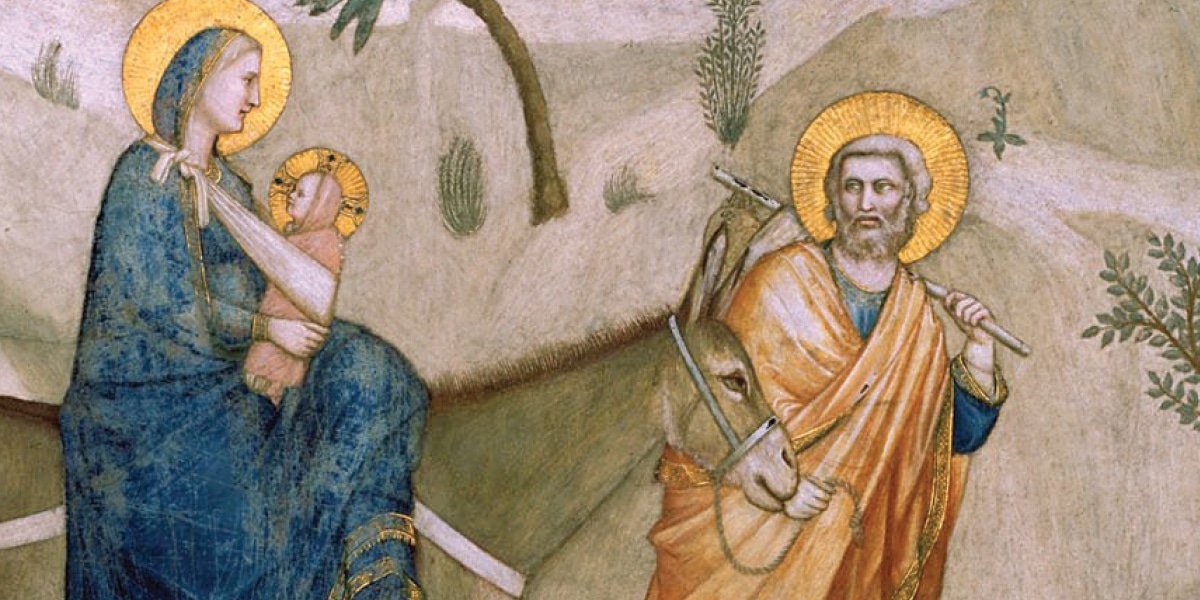Many people—still living or long dead—guided me to the Franciscans. This is my vocation story.
The story of how I became a friar hinges largely on dead men. Admittedly, there were some men who were very much alive who pointed the way forward. But it seems that it was the dead men who really taught me how to live this way of life.
First, I want to thank God! It was God who called me to this consecrated religious life. At first, the call was both surprising and scary. The surprise of it fueled the scariness, and that led me to suppress the whole notion and carry it about my neck like some embarrassing albatross.
Yet this albatross led me into the quiet spaces of the heart, mind, and soul. It led me to pull back from the Greek campus life I was immersed in. It caused me to retreat from my aerospace engineering ambitions, back into the only thing I’d ever been sure about: my Catholic faith. This albatross slowed me down enough to actually listen to God’s still, small voice. Slowly, I came to know it as true. This was because the call of consumerism, materialism, and careerism no longer made any sense to me in comparison.
During that retreat from the loud and competitive life of a state university in the early 2000s, I attended daily Mass on campus and prayed with my grandmother’s rosary in an empty Newman Center chapel. There, the call became compelling so compelling that I just had to join religious life. And with supernaturally inspired endurance, I completed my engineering degree in four years. Two months later, I began formation in the Order of Friars Minor (also known as the Franciscans). But it was before leaving the university fraternity house to join the fraternity of the friars that I encountered the two dead men who would greatly impact my future.
Questioning My Call
The first came during a conversation about religion with my paternal grandmother. A Catholic, she told me to read Thomas Merton’s The Seven Storey Mountain. She had told me that anyone who had grown up near the Abbey of Gethsemani in Kentucky (as she and I both had) must read that book.
I later found out, after my grandmother died, that she had told my grandfather that very evening that I would go on to religious life and the priesthood. But before getting too far ahead of the story, what I need to say is it was through that dead man’s autobiography that I encountered my first vocation story.
The second dead man I met before I graduated from the university was discovered in a lecture hall. With only one elective at my disposal amid a jam-packed, four-year engineering curriculum, I opted to take a philosophy course. There I met an elder statesman who taught the young to think for themselves. Socrates and his dialogues woke me up to the non-scientific, non-mathematical side of university studies. And within that single undergraduate course, I began to catch fire for the Socratic method.
Oddly enough, the Socratic method served me well as a new postulant in the Franciscans. The word postulant is from the Latin postulare to postulate. My task as a postulant was to question my call, question my fitness for becoming a friar, and question the friars with whom I now lived. All those questions were to help facilitate my discernment about whether to leave or remain in the order.
A New Dream Realized
As my discernment blossomed, I encountered more dead men. First, and most obviously, I ran into St. Francis of Assisi. Through in-house courses and reading lists centered on Francis, I encountered the saint who started the group God had called me into. The stature of the man was beyond legendary. Most of what I was learning and reading from the mid-1200s was making Francis out to be a second Christ.
Having been a cradle Catholic and a daily Mass-goer for years, I was alarmed at this. Was he really that holy? With dozens of pieces of good artwork around the friary where I was living and with all the reading I was doing, this Francis figure certainly was omnipresent during my year as a postulant. Needless to say, Francis of Assisi overwhelmed me. It was not until much later that I came to see him as a brother and model, as opposed to an untouchable saint.
Yet, while being saturated and overwhelmed by Francis, I met another dead man who was far more comprehensible and impactful. For me, it came at a time when the so-called American dream had lost its luster. Following the call of God into consecrated life looked to be the remedy for what ailed me. Meanwhile, much had terrified and sickened me about the post-9/11 America of my college years. The bombing of Baghdad occurred during my first year at the University of Kentucky. It was a warlike society that did not fit in with my rural Catholic upbringing. And it was at that critical juncture that I met Henry David Thoreau.
Thoreau was recommended to me amid a conversation over lunch at the friary. I was advised to read Walden. In turn, that book channeled my unbridled youth. It led me back to a place that had proved helpful in the past: a quiet, reflective place. Near Walden Pond, Thoreau challenged himself to discover how one could live a peaceful and fulfilled existence with as little as possible.
In hindsight, I realize that Walden helped bridge the divide between the American dream I had pursued for so long and the overwhelming, full-blown evangelical poverty of Francis of Assisi. The pages of Walden helped me loosen my grip enough to let American materialism fall away.
On the Road
Shortly thereafter I took a more confident leap into the second year of formation. That year is called novitiate. It is where novices, or beginners, live. There, another dead man showed up. His name was Father Arcadius Smolinski. Father Arcadius was a mixture of all the dead men I had “met” previously. He was an idealist who, like Thoreau, followed a unique call. Yet, like Socrates, he was old when he made his mark. And Father Arcadius lived the ideals of St. Francis of Assisi unlike anyone I had encountered.
And he was nearly a contemporary, having died only two years prior to our “meeting.” So, during my year as a novice in 2007, I was given a rough draft of Father Arcadius’ life one that was intended to promote his canonization document. I found him deeply inspiring due to his “friar-on-the-road” style. He literally walked around Europe for decades. Once, he even walked from Italy to Jerusalem and back!
I found myself wanting to keep pace with St. Francis. I wanted what he wanted. I had become ready to run the evangelical race with full force.

Father Arcadius saw himself as radically open to talking with anyone about Jesus Christ and his Church. He wanted to be on the road so that people who needed a friar could find one. Reading his story felt like my first encounter with Socrates and my days sitting by Walden Pond thrilling and inspiring. Meanwhile, Father Arcadius helped Francis of Assisi become more and more approachable.
I have told and retold Father Arcadius’ story to anyone who would listen. Other young friars were likewise inspired. Several of us became determined to seek permission to take to the road like Father Arcadius. We wanted to follow the pattern of Luke 9:3: “Take nothing for the journey.” After we begged our superiors and conscripted two 50-year-old friars, permission was granted. Thus, in the summer of 2009, four very green friars and two seasoned ones took to the roads of rural Virginia.
Fifty days of pilgrimaging ensued. We trekked across landscapes and into the lives of hundreds of benefactors. All told, we traveled some 325 miles. Our negative experiences were few, while our experiences of the true, good, and beautiful and of Christian charity were countless. During that summer, I felt as if we were bringing the lessons of my dead mentors to life. Or perhaps they helped bring me to life.
Indebted to St. Francis
Soon, I settled into the seminary. There I encountered more dead men. But it wasn’t the content at school that transformed me as much as the dead men within the Franciscan library at our friary. There, I encountered Peter John Olivi, Blessed John Duns Scotus, and William of Ockham.
These three medieval friars rocked my intellectual world. They helped sharpen my thinking in a manner that would have pleased Socrates. From Olivi, I gained courage to live the friar life of poverty through sound theory and demonstrable practice. From Scotus, I learned the art of the subtle argument, the centrality of Christ, and the beautiful significance of our Blessed Mother. It was the prowess of William of Ockham that deepened my appreciation for the scientific studies of my university years.
As the years continued to pass and the dead mentors mounted, I began to circle back to the particulars of my weighty call to live in the manner of St. Francis of Assisi. But before I could profess permanent and solemn vows to such a life, I was asked to spend a week reencountering Francis of Assisi through his written words. During that time, much to my surprise, I was no longer overwhelmed by Francis’ example. Instead, I found myself wanting to keep pace with him. I wanted what he wanted. I had become ready to run the evangelical race with full force and to do so in the style of St. Francis of Assisi.
And to finally speak in the present tense: The major twists and turns of the race that of final vows, seminary formation, and ordination are now behind me. Even the early challenges of my years in the priesthood are back there among the early mile markers. And all along the race, it has been dead men and their lessons that have kept me on course and on pace.
There and Back Again
Currently, I am responsible for the vocations of other men. As the director of vocations, I am the friar who helps the called to answer the call; a role I inherited from my predecessor, the late Father Don Miller, OFM, who helped guide me, in his own way, to the Franciscans.
I assist at the beginning of the process that I call “becoming a friar.” And trust me when I say that I am not the recruiter type who aggressively persuades a man to join up. Instead, trusting in the process that guided my own vocation, I attempt to stride alongside these men as they build upon and are influenced by those living and dead mentors who have carried them along.
Yes, I help men to fill out paperwork and get prepared to enter our formation program. But I’m also constantly asking them about what they read, who inspires them, what Gospel passages resonate in their hearts, what saints they pray to, and how they utilize the Blessed Mother’s intercession.
I am confident that the stories of Francis of Assisi, the characters of the Gospel, and the saints of old will assist and inspire these men far more than my own life, about which I imperfectly plod along.
Sidebar: The Labouré Society
The Labouré Society rescues Catholic vocations from the impediment of student loan debt. In the United States, there are thousands of men and women who wish to serve the Church, but are prevented from entering seminaries, convents, and religious communities because they have outstanding student loan debts. The result is or could be the loss of priests and religious at a time when the Church’s need for vocations is critical.
Using an innovative Catholic philanthropic fund-raising model, Labouré teaches these future priests and sisters how to raise funds for vocations. They raise funds as a collective class of 2022 future priests and religious. Using this model, they are able to pay back six-figure debt in 12-18 months rather than 12-18 years. The results are hundreds of vocations saved.
Operating since 2003, Labouré has delivered more than 285 men and women into formation. It has awarded more than $6.4 million to aspirants to free them from student loan debts. Ninety percent of donor gifts go to aspirants. Over 80 percent of those aspirants are currently in formation or have gone on to ordination or profession of final vows.
The Labouré Society, named after St. Catherine Labouré, who experienced difficulty in her own vocation journey, exists to help men and women achieve their religious dreams. The society’s vision is “a world where Catholic priests, sisters, and brothers exist in adequate numbers to fill the world’s needs, where young people everywhere who feel they are called to the priesthood or religious life have the opportunity to pursue that calling.”
To learn more, go to LaboureSociety.org.








